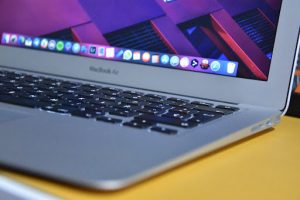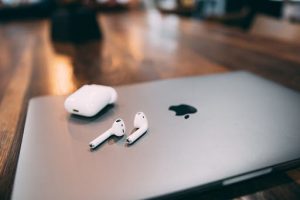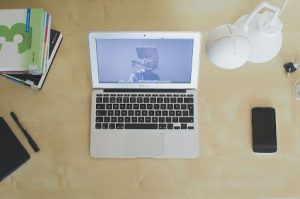Let’s face it—a slow MacBook is most likely the result of your neglect to take proper care of the computer. Overall, Apple computers are known for their reliability and longevity. Sure, they are not eternal, but slow computer performances usually come down to users rather than hardware issues.

If you want to restore your MacBook’s performance to what it was before, or, at the very least, improve it to the point where using your Mac is not a chore, the ideas below should prove quite useful.
Take Care of Drive Space
If you have a MacBook with a solid-state drive rather than a hard drive, it is no surprise to run into storage issues. For all its good points, Macs are not the best when it comes to available drive space. Moreover, some people do not bother with managing it properly.
For example, if you like to consume media, you might be inclined to hoard media files on the computer instead of using streaming platforms.
Other than taking care of large media files, you also want to know how to uninstall apps on Mac, especially the ones you no longer need. Information on that can be found here.
Finally, keep in mind that you can also use external storage devices or cloud storage. A decent HDD is relatively cheap, and iCloud costs a few dollars per month if you want to upgrade the default plan.
Clean Dust Inside
If you hear loud noises and notice that the MacBook is overheating on top of struggling to run optimally, the main issue could be the dust accumulation inside the laptop. Be it dust in your room, pets, or other factors, it is more or less inevitable to keep the MacBook’s inside clean.
If you wish to remove the dust inside, keep in mind that you will need to take the MacBook apart for thorough cleaning. As there are some risks involved when tinkering with the laptop’s body and internal hardware, it might be better to leave it in the hands of someone who knows what they are doing.
Trim Startup Apps

A slow loading speed after you boot the computer can be reduced by trimming up the startup item lists. There are bound to be some applications you installed that start with the MacBook, and you do not need them right off the bat. Check the login item list and disable startup applications for better performance.
Close Background Processes
Activity Monitor lets you see which background processes are consuming the most resources. You can also sort these processes by specific resources, such as memory, energy, and CPU.
The background process list might be too long, but most of it will consist of important system operations you should not quit.
What you need to focus on are applications that should not be running in the background in the first place. Perhaps it is a startup item that you forget about? Or maybe you spent a bit of time chatting on Discord and forgot to close it after?
It is also worth noting that switching to alternatives could also help with the overall resource management. For instance, if your current internet browser is consuming way too much memory, you might want to switch to a different option.
Upgrade Hardware
Like with other laptops, MacBook hardware upgrades are a bit tricky. In fact, some models are impossible to upgrade due to integrated hardware and compatibility issues.
Nevertheless, if you have the money to invest and have a compatible model, there are a couple of potential upgrades to consider.
One of the most common changes is switching from an HDD to an SSD. New Macs come with a solid-state drive, but older models still run on a hard drive.
An external graphics processing unit is also worth a shout. It might be a tad expensive for some, but the upgrade is quite noticeable as far as a MacBook’s performance goes.
Try the Latest macOS Version

As a rule of thumb, you should update your MacBook to the latest macOS version as soon as one becomes available. There are some exceptions, such as encountering flickering screen issues after an update, but just like with other similar devices, it is better to have the most recent operating system version.
Not only are there new features and security patches, but you can also expect performance upgrades with each update.
Check for Potential Viruses
Even though MacBooks are not as prone to cybersecurity threats as other computers, you should still not underestimate the potential. Despite being careful, it is still possible to attract unwanted malware and viruses.
Also, keep in mind that running antivirus software is not necessarily enough to present certain threats. Therefore, be careful and scan your computer regularly so that you can eliminate potentially corrupted files that are slowing down the overall MacBook performance.
Disclosure: The articles, guides and reviews on BlowSEO covering topics like SEO, digital marketing, technology, business, finance, streaming sites, travel and more are created by experienced professionals, marketers, developers and finance experts. Our goal is to provide helpful, in-depth, and well-researched content to our readers. You can learn more about our writers and the process we follow to create quality content by visiting our About Us and Content Creation Methodology pages.
